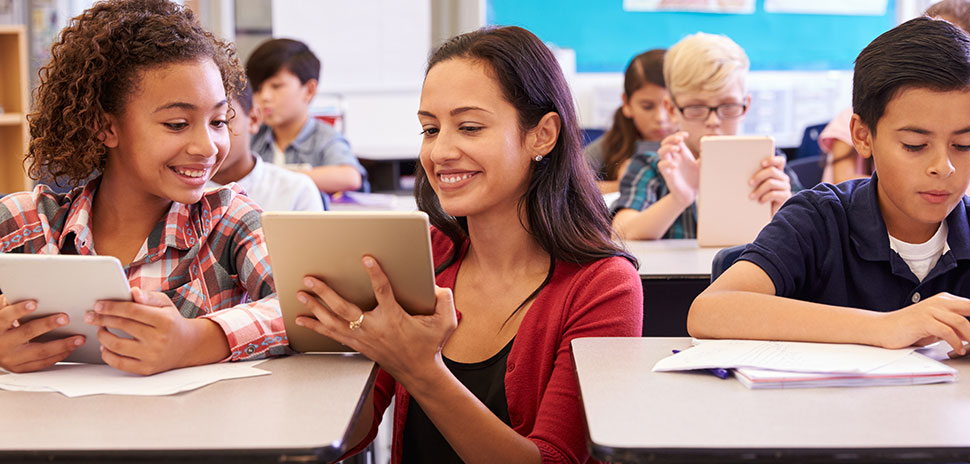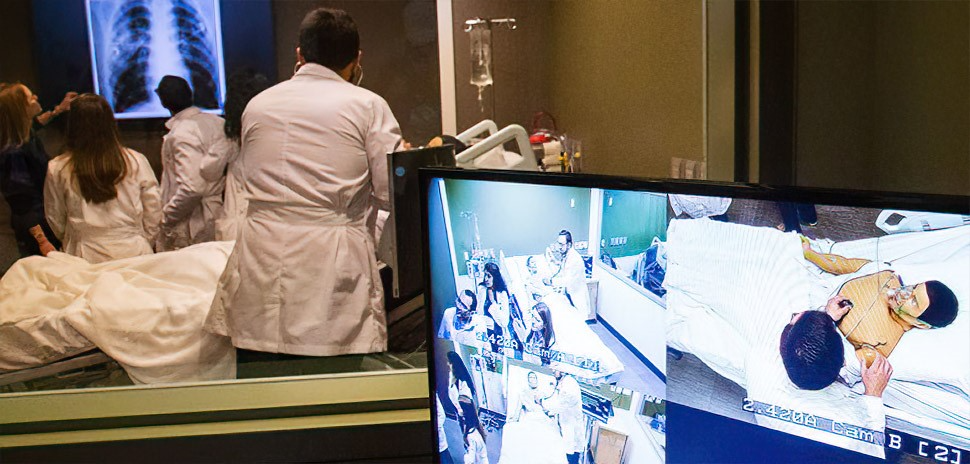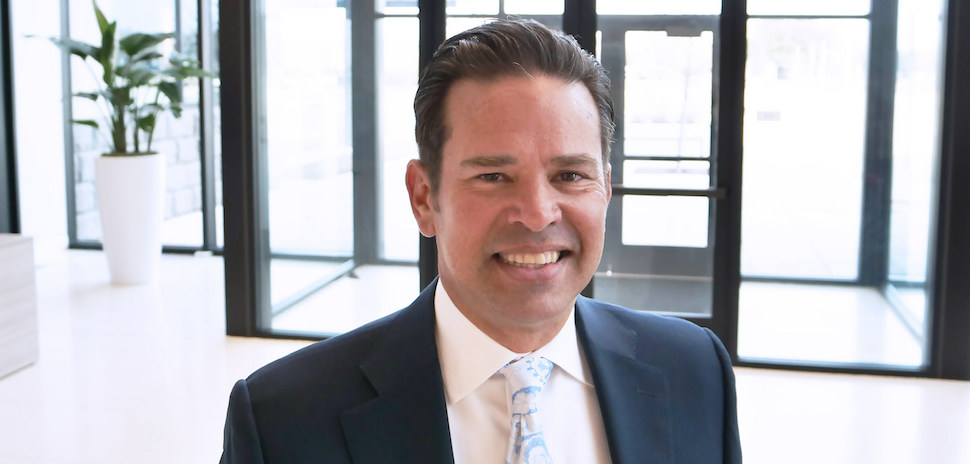We recently caught up with Dallas ISD Chief of Transformation and Innovation Mike Koprowski to get his take on technology’s role in education and what can be done to better prepare teachers and students in an increasingly tech-driven society. These answers have been edited for brevity and clarity.
In what ways do you think technology has most transformed education? What big changes do you foresee on the horizon?
Technology is everywhere in education these days. Billions are spent each year. The ed-tech industry is growing quickly. Paper and pencil tests are increasingly taken on a computer. Lessons are delivered virtually. In the classroom and in Dallas ISD, educators are implementing a wide array of technology-heavy strategies, such as learning management systems, adaptive learning software, blended learning, personalized learning, student information systems, and many more. Obviously, technology is changing the way we do business.
Technology can certainly be a useful tool for educators if it’s implemented well, but it is by no means a panacea.
However, technology is not a magic bullet. Despite the heavy investments, there is little evidence to show that technology, in and of itself, is improving student outcomes. Technology can certainly be a useful tool for educators if it’s implemented well, but it is by no means a panacea. We must be cautious in our approach, not overstate its promise or impact, and ensure that teachers are well trained on how to use available technology to advance student learning.
What qualities will the teacher of the future need in an increasingly tech-driven society?
Teaching is one of the toughest professions in the world. Best-in-class teaching practices have been around for a while, such as differentiating instruction and data-driven decision-making. Technology can be a tool to enable and accelerate those best practices, but those practices are and always have been “tried and true,” well before the tech revolution. Good classic teaching is still good classic teaching.
However, I do think technology has introduced new complexities into the teaching profession that didn’t exist 20, 10, or maybe even 5 years ago. For example: helping students to develop “civic online reasoning,” in the words of researchers at Stanford University’s History Education Group. Basically, it means developing students’ “ability to judge the credibility of information viewed while on electronic devices.” “Fake news” is proliferating quickly and our kids need the ability to navigate the internet minefield so that they can make informed decisions and become responsible citizens. Recent research suggests our kids don’t yet have these abilities. The term “critical media literacy education” is probably more relevant for teachers today than it has been in the past.
What are the next steps schools need to take to better prepare students for future careers?
Cathy Davidson, founding director of The Futures Initiative out of City University of New York, has written in her book, Now You See It, that approximately 65 percent of kids entering grade school currently will end up in careers that haven’t been invented yet, That’s a daunting statistic for a school system that is trying to prepare students for successful careers.
Kids need a rigorous, intellectually demanding learning environment that gets beyond fill-in-the-blank worksheets and multiple choice bubble sheets.
But the good news is that, whatever those careers end up being, we know the types of skill-sets that kids are going to need to be successful in the 21st century, such as inferring and drawing conclusions, making persuasive arguments with evidence, articulating those arguments through meaningful writing and speaking, being able to navigate unprecedented levels of information (as mentioned above), resolving opposing points of view, and solving complicated on-going problems with no easy solutions. Kids need a rigorous, intellectually demanding learning environment that gets beyond fill-in-the-blank worksheets and multiple choice bubble sheets.
What DFW schools or education programs come to mind when you think “innovation?” What lessons can others learn from them?
I would point to the Choice Schools we have in Dallas ISD. Choice Schools showcase a variety of specialized academic models such as STEM, leadership, Montessori, entrepreneurship, and personalized Learning. We know that all kids are unique individuals. They learn in different ways; they aspire to different careers, and they are interested in different subjects. The more “best-fit” options, the better. If all students are able to attend a high-quality, “best-fit school,” then they will realize their full academic potential. Choice Schools’ student achievement results thus far have been very encouraging.
In addition to the unique academic models, I think Choice Schools offer several more lessons: 1) Choice Schools are designed organically by school-level educators, not central office administrators. This ensures that school-level educators are empowered to become the primary engines of fresh concepts and designs, which leads to tremendous creativity and “buy-in” from the school staff; 2) Choice Schools offer a school-wide model where every child in the school participates in the same rigorous curriculum. And Choice Schools do not “screen” kids based on prior academic performance or behavioral history, but instead, conduct blind lotteries open to all students. For these reasons, Choice Schools are demonstrating that academically struggling students should not be “tracked” into lower-level classes, but rather will rise to expectations under a school-wide, rigorous curriculum with the appropriate supports in place; 3) Choice Schools are focusing heavily on developing social and emotional learning competencies, such as grit, responsible decision-making, and social awareness. We know that these non-academic competencies are correlated with success in college and career; and, 4) Choice Schools are also focusing on project-based learning which enables students to acquire deeper knowledge by exploring real-world challenges and problems.
From their inception, Choice Schools were designed to be a “laboratory” for the district to pilot better ways to drive student success. The lessons learned through Choice Schools, such as those mentioned above, must be continually “looped back” into the district as a whole to improve educational outcomes in all schools for all students.
Do school systems need more freedom or regulations to improve academic performance?
I’m a believer in the concept of “earned autonomy,” which Dallas ISD is currently trying to codify and operationalize. The idea is that, if schools can show sustained academic growth over time, then they should be able to earn greater levels of autonomy over staffing, budgeting, curriculum, professional development, scheduling, and the like. In short, the levels of autonomies granted to a campus should be based on performance. Generally speaking, the district’s highest-performing campuses should be granted the highest levels of autonomy over a range of decisions and the district should take more of a “hands-off,” on-demand service-based approach. On the other hand, the district’s struggling campuses should not have the same levels of autonomies because they have yet to demonstrate mastery of the district’s core practices. For these campuses, the district should take a more “hands-on” support
In short, the levels of autonomies granted to a campus should be based on performance. Generally speaking, the district’s highest-performing campuses should be granted the highest levels of autonomy over a range of decisions and the district should take more of a “hands-off,” on-demand service-based approach. On the other hand, the district’s struggling campuses should not have the same levels of autonomies because they have yet to demonstrate mastery of the district’s core practices. For these campuses, the district should take a more “hands-on” support approach, such as required professional development and follow-up sessions.
Educators consistently report that autonomy is crucial for their job satisfaction, so it makes sense for school districts to develop a formal, transparent way to grant earned autonomies. It’s hard and complicated work, but definitely a worthwhile challenge for a school district.
What are the biggest challenges facing education in 2017 and how can school systems overcome them?
There are many big challenges in public education, but I’ll highlight one issue that is often overlooked. To me, the long-standing “800-pound gorilla” of public education is the pervasive economic and racial segregation of our schools, which research shows is harmful to kids.
In many places, schools are as segregated today as they were in the late 1960s. This is a massive problem for a variety of reasons. Socioeconomically diverse schools are 22 times more likely to be high-performing than high-poverty schools. On recent NAEP math scores, poor students in more socioeconomically mixed schools tested two years ahead of poor students in high-poverty schools, highlighting a consistent finding that poor students achieve higher test scores and better grades in diverse settings as opposed to high-poverty settings. They are also more likely to graduate from high school and college, thereby improving economic productivity and growth. Moreover, middle-class student achievement sustains in diverse settings and all children benefit socially and morally (i.e., learning to work with people from different backgrounds, developing more cross-racial friendships, harboring less prejudice, etc.).
Studies show that students who attend more integrated schools are more likely to work in diverse offices as adults and reach higher levels of occupational attainment. The latest cognition research suggests that diversity actually makes us smarter by improving our critical thinking and problem-solving abilities. For middle-class and low-income students, it is a win-win situation.
According to a 2014 UCLA study, in Dallas ISD, the average black student attends a school that is 3.1 percent white and the average Hispanic student goes to a school that is 3.9 percent white. These are some of the worst numbers in the country. Moreover, about 85 percent of Dallas ISD campuses are 80 percent low-income or more. Where you do find affluent students in Dallas ISD, they tend to be enrolled in highly selective magnet schools or in a handful of neighborhood schools that serve wealthy attendance zones.
In the DFW area, it is estimated that 27 percent of white students attend a mostly low-income school, compared to 73 percent of black students and 77 percent of Hispanic students. We must come to terms with these harsh realities. Economic and racial segregation remain a defining feature of our education system, and I do not believe it is academically, economically, or morally sustainable.
There are promising strategies that we have piloted within the district to help break up concentrations of poverty and to promote greater levels of racial and socioeconomic integration. Hopefully, these “proof points” can be scaled at some point in the near future.
You can learn more about our integration efforts here.
Delivering what’s new and next in Dallas-Fort Worth innovation, every day. Get the Dallas Innovates e-newsletter.



































































